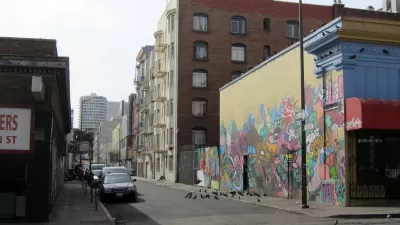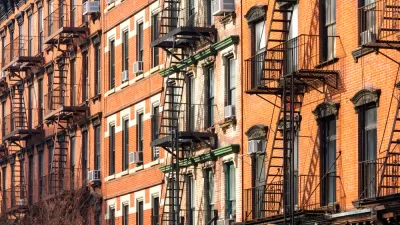Rick Jacobus argues that those who block new development on social justice grounds aren't fighting to win long-term. Building is necessary, but with it should come robust affordable housing mandates.

Rick Jacobus thinks vigorous development can eventually solve the housing crisis, but only if it comes with hefty affordable housing provisions. The first step is for all parties to agree that we should, in fact, be building more housing.
Until recently, Jacobus writes, the term "NIMBY" applied to "middle-class or upper-class residents who resisted the location of affordable housing developments in their neighborhoods. What we are seeing now are movements of the poor and their advocates resisting the location of luxury-housing projects."
While activism can counter displacement in some neighborhoods, the effort to preserve places in amber may be doomed to fail. "We are in the middle of a once in a lifetime tectonic shift in consumer preferences regarding urban living." The well-off want to return to cities, and the new question has become: where to house the rich?
Jacobus rejects the notion that unmitigated free market development will let luxury housing "trickle down," preserving diversity. Instead, he envisions a strong combination of rent control and, even better, social housing in which public or nonprofit landlords keep rents low. These tactics should expand to protect one-third of new development, letting low-income residents share in an urban resurgence.
FULL STORY: Why We Must Build

Planetizen Federal Action Tracker
A weekly monitor of how Trump’s orders and actions are impacting planners and planning in America.

Congressman Proposes Bill to Rename DC Metro “Trump Train”
The Make Autorail Great Again Act would withhold federal funding to the system until the Washington Metropolitan Area Transit Authority (WMATA), rebrands as the Washington Metropolitan Authority for Greater Access (WMAGA).

DARTSpace Platform Streamlines Dallas TOD Application Process
The Dallas transit agency hopes a shorter permitting timeline will boost transit-oriented development around rail stations.

Parks: Essential Community Infrastructure — and a Smart Investment
Even during times of budget constraint, continued investment in parks is critical, as they provide proven benefits to public health, safety, climate resilience, and community well-being — particularly for under-resourced communities.

Porches, Pets, and the People We Grow Old With
Neighborhood connections and animal companions matter to aging with dignity, and how we build can support them. Here’s a human-scale proposal for aging in place.

Single-Stair Design Contest Envisions Human-Scale Buildings
Single-stair building construction is having a resurgence in the United States, where, for the last several decades, zoning codes have required more than one staircase in multi-story housing developments.
Urban Design for Planners 1: Software Tools
This six-course series explores essential urban design concepts using open source software and equips planners with the tools they need to participate fully in the urban design process.
Planning for Universal Design
Learn the tools for implementing Universal Design in planning regulations.
City of Charlotte
Municipality of Princeton
City of Camden Redevelopment Agency
City of Astoria
Transportation Research & Education Center (TREC) at Portland State University
US High Speed Rail Association
City of Camden Redevelopment Agency
Municipality of Princeton (NJ)





























